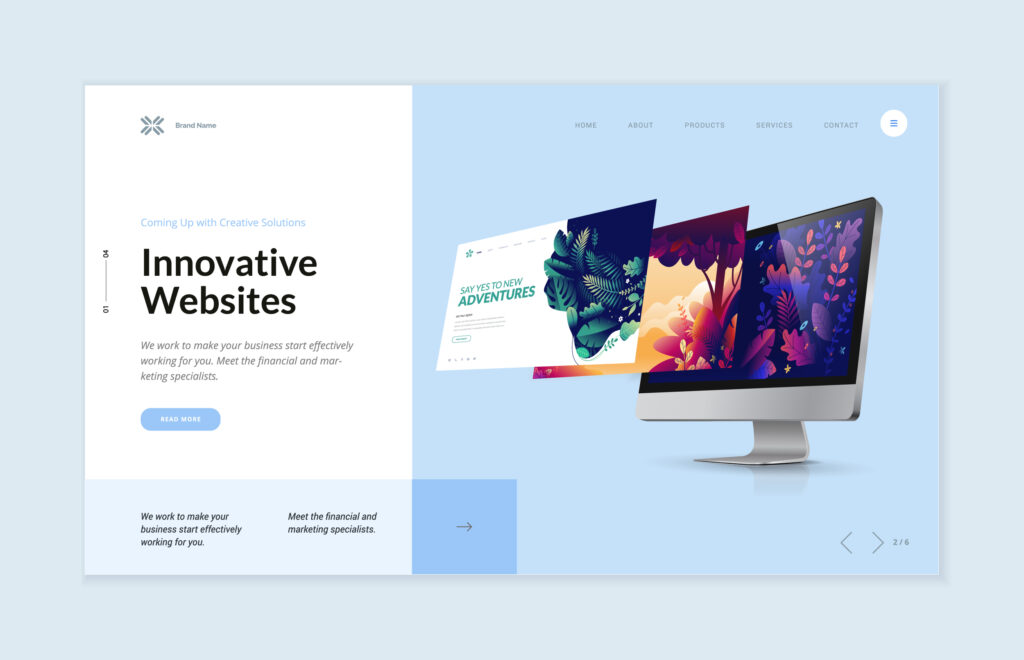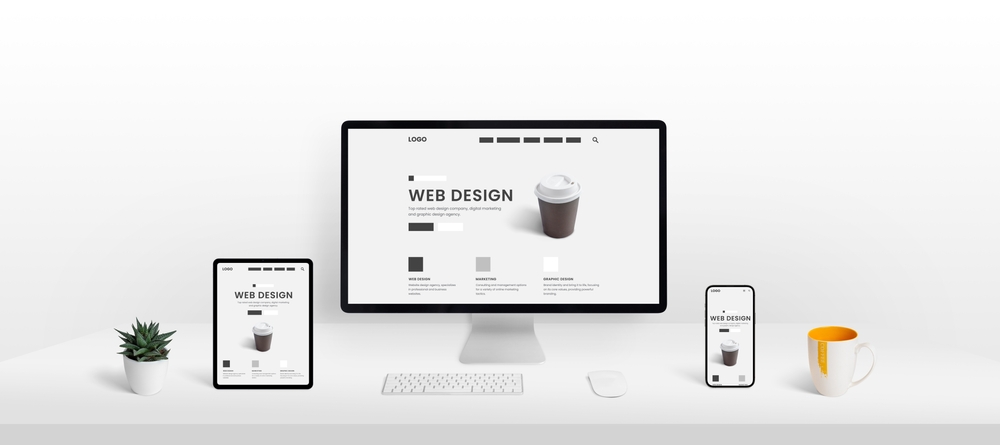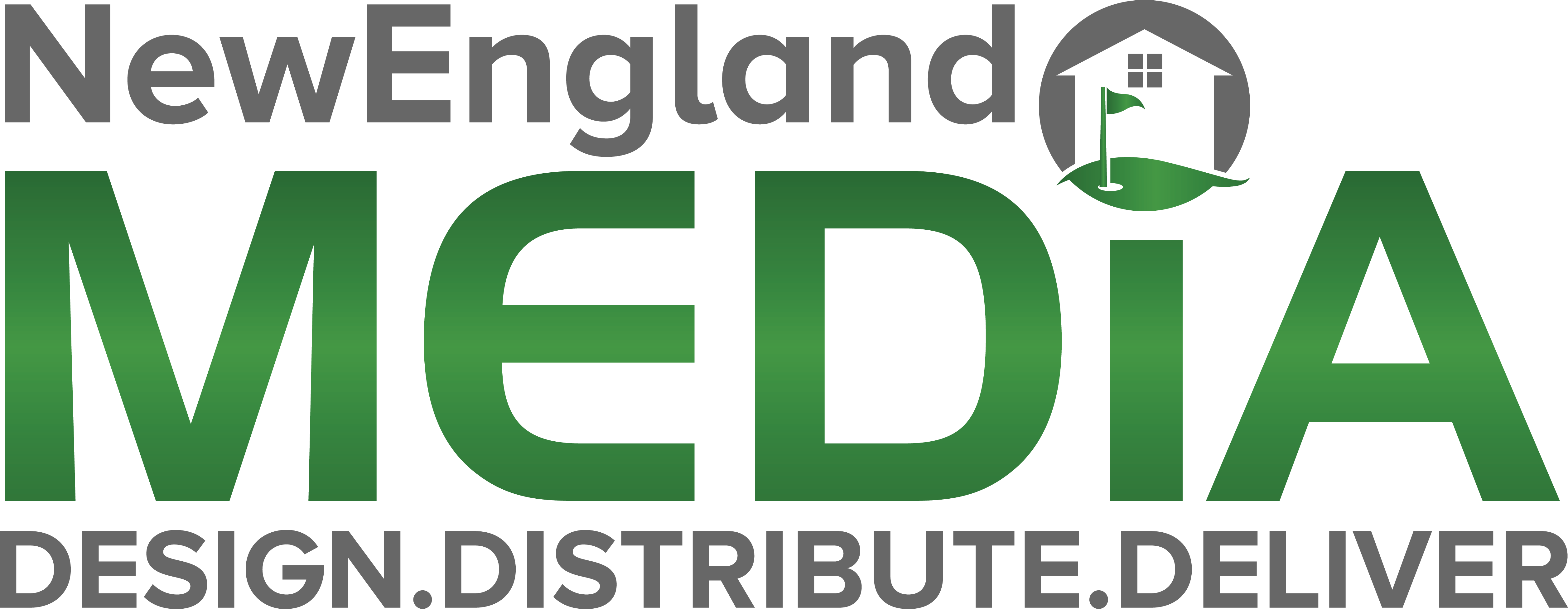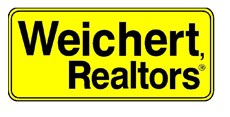In the digital world, where attention spans are shorter than ever, it’s essential to have a web design that grabs and holds the attention of your visitors. A cluttered and confusing design can quickly lead to visitors bouncing away, while a simple and clean design can keep them engaged and interested. This is why minimalistic web design is becoming increasingly popular, as it provides numerous benefits over traditional web design.
In this article, we’ll explore why minimalistic web design is so effective and how it can help you make the most of your website.
What is Minimalistic Web Design?
Minimalistic web design is a design style that focuses on simplicity and clean lines. This design style emphasizes the content of a website and eliminates any distractions that might take away from the user’s experience. Minimalistic web design is different from other styles of web design because it uses a limited color palette, simple typography, and clean lines to create a sophisticated yet uncluttered look. This design style is also known for its negative space, which provides a sense of calm and allows the user’s focus to remain on the content.
Benefits of Minimalistic Web Design

There are several benefits of using minimalistic web design on your website. Here are some of the most notable benefits:
Increased User Experience
When it comes to web design, user experience (UX) is everything. This refers to how easy and enjoyable a user finds your website to use.
Minimalistic web design improves the user experience by making it easier for users to find what they’re looking for. A clean, uncluttered design makes it easier for users to navigate a website and find the information they need. Additionally, minimalistic web design reduces the amount of clutter on a website, which can be overwhelming and distracting for users. By focusing on simplicity, minimalistic web design creates a more user-friendly experience.
Increased Speed and Performance
Minimalistic web design also improves the speed and performance of a website. A website with a clean, uncluttered design requires fewer resources to load, which means it will load faster and be more responsive. This is especially important for users who are accessing the website on mobile devices or on slower internet connections. By improving the speed and performance of a website, minimalistic web design provides a better user experience.
Increased Focus on Content
A minimalistic web design focuses on the content, allowing it to be the show’s star. This is particularly important for businesses, as it allows them to communicate their message and brand values clearly and concisely. The simple design draws attention to the content, making it easier for users to understand and engage with. Additionally, this design style makes it easier for businesses to update their content regularly and keep their website relevant.
Increased Accessibility
Minimalistic web design also improves website accessibility. Using a simple color palette and clean lines, websites designed in this style are easier for users with visual impairments to navigate. Additionally, minimalistic web design is often designed to be responsive, which means it will adjust to different screen sizes and provide a better user experience on mobile devices.
Increased Brand Identity
Finally, minimalistic web design helps establish a brand’s identity. Using a simple, sophisticated design, a brand can create a strong, recognizable look that sets it apart from the competition. Additionally, minimalistic web design allows a brand to focus on its core values and messaging, which helps build a stronger relationship with its audience.
Examples of Minimalistic Web Design
Striking examples of minimalistic web design are depicted in websites such as Dropbox, Apple, Google, Nike, and Basecamp. All these sites showcase simplicity at their best, allowing viewers to focus on the content instead of the design.
Dropbox, for example, has a very sleek and modern homepage with few elements — only enough to highlight key features and functions that the service offers. The minimalist color scheme of white, black, and blue further reinforces the feeling of elegance without detracting from the purpose and message of the website.
Apple also provides an excellent example of minimalistic design. The main page is dominated by a single product and its features without the distraction of too much information or visual clutter.
Google’s homepage is equally simple and effective. It only contains a search input bar, a few images, and minimal links to other pages.
Nike also demonstrates an impressive example of minimalist web design with an iconic black and white layout and bold typography.
Finally, Basecamp has implemented a clever use of minimalism and design by using simple shapes, images, and text to create an effective landing page that tells the story of its product. This website is also a great example of how basic elements can be used in creative ways to create a unique and memorable user experience.
Overall, these websites are excellent examples of how minimalistic web design can be used to create stunning visuals while communicating the message in a clear and concise manner. By focusing on essential elements, such as color schemes, typography, and imagery, these sites have successfully created an impactful user experience.
Best Practices for Minimalistic Web Design

When creating a minimalistic web design, it’s important to follow best practices to ensure that your website is effective and user-friendly. Here are some best practices to keep in mind:
- Use a limited color palette: A limited color palette will help create a clean and uncluttered look for your website. Use neutral colors such as black, white, and gray, and only add pops of color where necessary.
- Use simple typography: Simple, easy-to-read typography is essential for a minimalistic web design. Avoid using fancy or decorative fonts, and instead opt for clean, sans-serif fonts.
- Use negative space effectively: Negative space is a key component of minimalistic web design. It helps create a sense of calm and allows users to focus on the content of your website. Make sure to use negative space effectively to achieve the desired effect.
- Avoid clutter: Avoid adding unnecessary elements to your website, such as multiple buttons, images, or banners. Focus on simplicity and only include what is necessary to achieve your goals.
- Make sure your website is responsive: Minimalistic web design should be designed to be responsive, which means it should adjust to different screen sizes. This will ensure that users have a good experience on your website, regardless of the device they’re using.
Common Mistakes to Avoid in Minimalistic Web Design
While minimalistic web design can be a great choice for your website, it’s important to avoid common mistakes that can detract from the user experience. Here are some common mistakes to avoid:
- Overusing negative space: While negative space is important for minimalistic web design, too much of it can make your website look unfinished or unprofessional. Make sure to use negative space effectively to achieve the desired effect.
- Ignoring accessibility: Minimalistic web design should be accessible to all users, including those with visual impairments. Make sure that your website is accessible, and consider using high-contrast colors to make it easier for users to see.
- Neglecting the importance of content: Minimalistic web design should emphasize the content of your website. Make sure that your content is well-written, easy to read, and provides value to your users.
- Not considering the user experience: Minimalistic web design should always prioritize the user experience. Make sure that your website is easy to navigate, provides the information users are looking for, and is responsive to different devices.
Minimalistic web design is a design style that focuses on simplicity and clean lines. It uses a limited color palette, simple typography, and clean lines to create a sophisticated, uncluttered look.
The benefits of minimalistic web design include increased user experience, increased speed and performance, increased focus on content, increased accessibility, and increased brand identity.
The best practices for minimalistic web design include using a limited color palette, using simple typography, using negative space effectively, avoiding clutter, and making sure your website is responsive.
Common mistakes to avoid in minimalistic web design include overusing negative space, ignoring accessibility, neglecting the importance of content, and not considering the user experience.
Minimalistic web design is a great choice for creating a modern and sophisticated website. By following the best practices outlined above, you can ensure that your website looks professional and provides users with an enjoyable experience. With careful planning, minimalistic web design can be an effective way to create an eye-catching website.


















